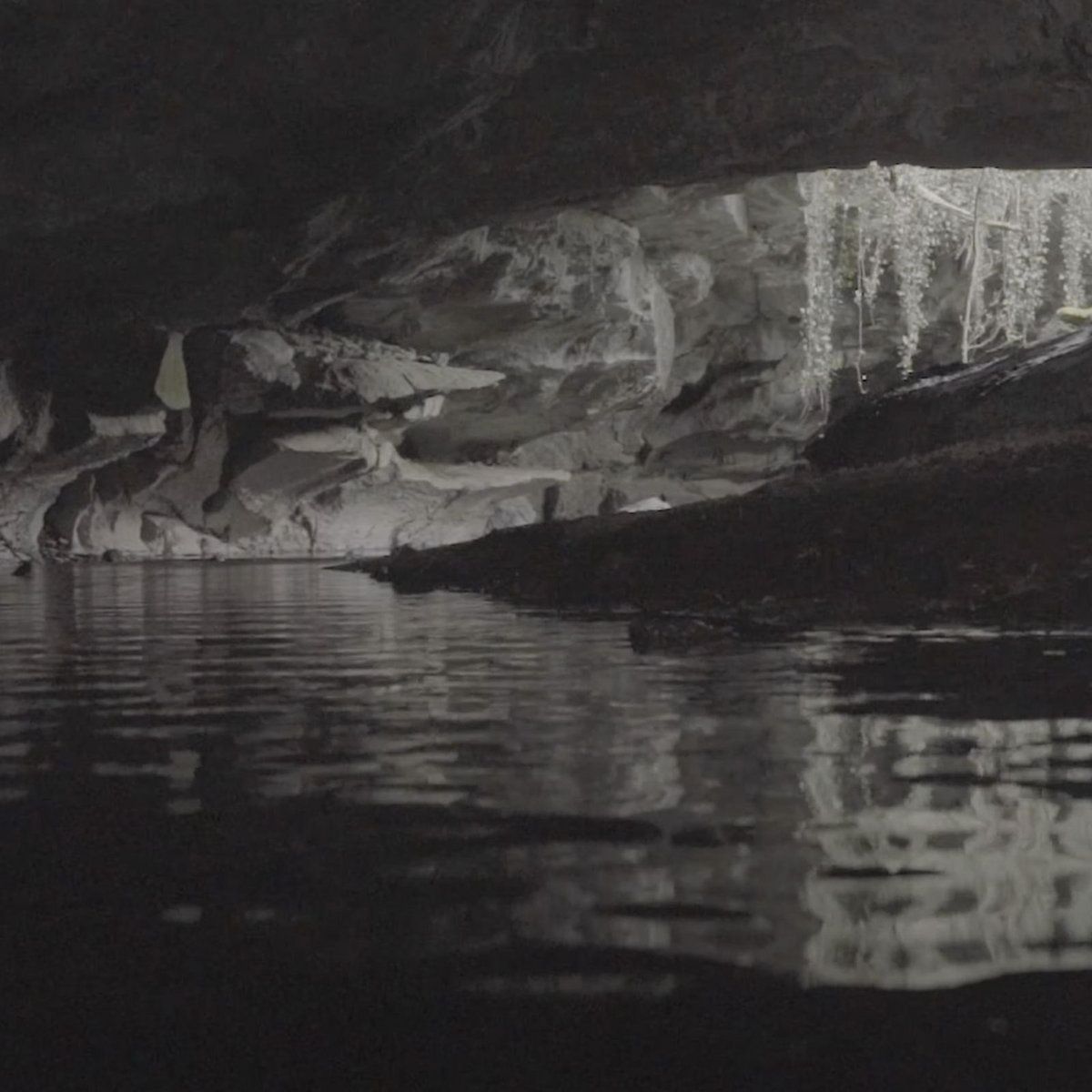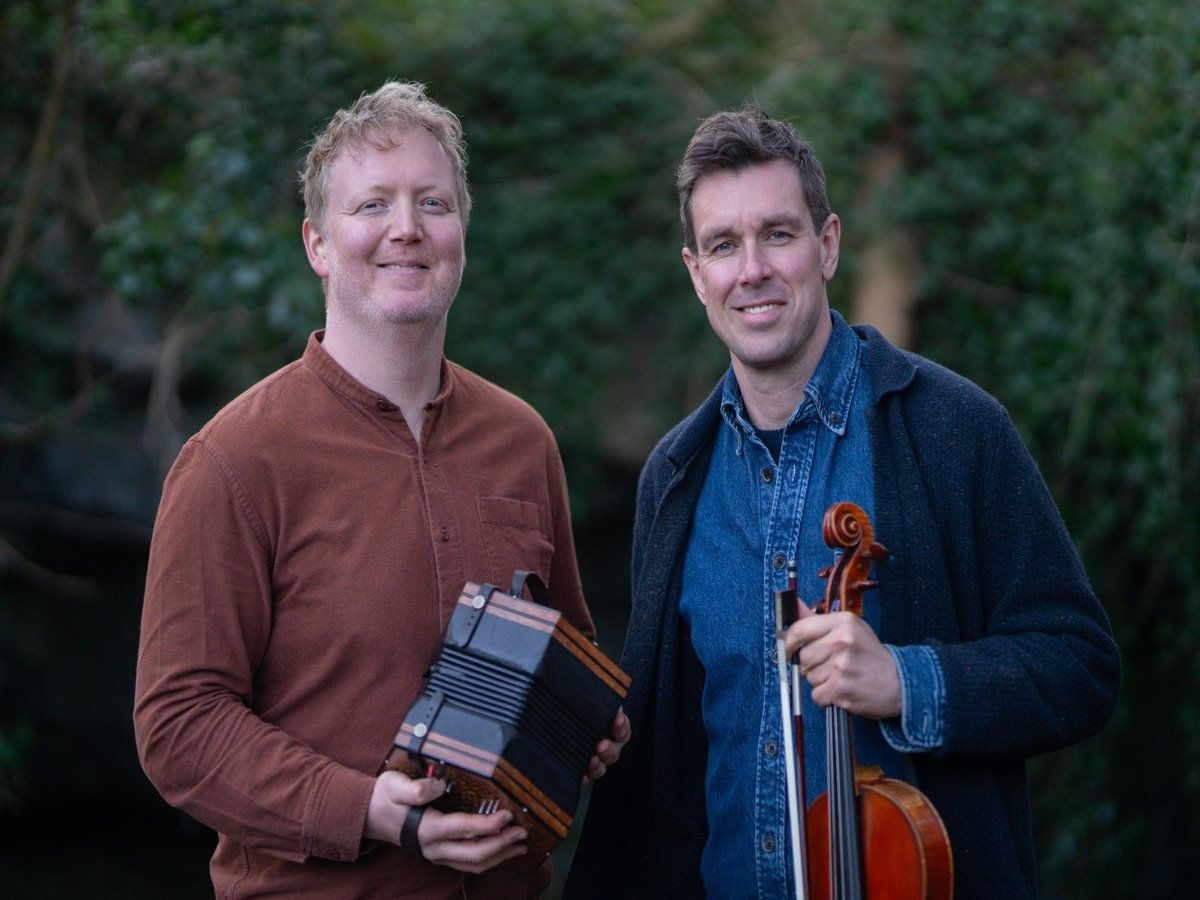In the media yoke this week is “Into the Loam” by concertina player Cormac Begley and fiddle player Liam O’Connor. This one was really interesting. Begley and O’Connor (as you’ll read below) are two of Ireland’s finest players, so when I first heard they had an album on its way I was intrigued to hear it. But, when when it came out more than a couple people asked me – with almost morbid curiosity – if I’d yet heard it. Now, I knew that both could be very progressive in their respective approach, but I began to wonder what on earth they’d done to elicit that kind of response in people. What did I have in store?

Begley, from the renowned West Kerry Begley family, is one of Ireland’s most distinctive concertina players. He performs across the full range of concertina-shaped instruments (from bass to piccolo) and is known for his bold, rhythmic style that pushes the instrument’s expressive possibilities. He’s made several critically acclaimed albums, including “Cormac Begley” (2017) and “B” (2022), is a Seán Ó Riada Award recipient (2014) and was nominated for Instrumentalist of the Year at the RTÉ Radio 1 Folk Awards (2018). Over the years, he’s collaborated with folks like Jack Talty, Caoimhín Ó Raghallaigh, Liam Ó Maonlaí and Lisa O’Neill and has played in the group Ré and the trio Concertina (with Noel Hill and Jack Talty). In addition, he founded both Airt (an arts space on the Dingle Peninsula) as well as the award-winning Tunes in the Church concert series.
O’Connor, son of Mick O’Connor, flute player & author of the recently reviewed book “In Safe Hands,” is one of Ireland’s most brilliant fiddle players. He is known for his intricate, highly nuanced style that allows him a very wide expressive palette. O’Connor’s has made some superb albums, including “Dublin Made Me” (with uilleann piper Seán McKeon, 2009) and “The Loom” (2017), he’s won multiple All-Ireland and Oireachtas titles and in 2002 he was TG4’s Young Musician of the Year. In addition, he’s collaborated with some of the music’s leading figures, including Liam O’Flynn, Noel Hill and Harry Bradley. Were this not enough, he is the director of the Irish Traditional Music Archive and has used his stewardship there to increase the institution’s already serious prestige.
From one perspective, the music on this album sounds as you might expect it to, with Begley bringing his percussive A-game and O’Connor’s virtuosity as apparent as you’d hope it. But together they’ve found some very fertile artistic ground. The two have a sublime way of playing off one another that gives every track something that I find special.
“Master Crowley’s / The Roscommon Reel” is a good example. There’s a hard swing in the playing that gives it a real drive, but it’s the depth, achieved by Begley’s bass concertina and O’Connor’s viola, and the way the vibe off each other, that makes this track particularly attractive. (“Tom Ganley’s No. 1” has kind of a similar feel about it.) They work through things similarly on “Ryan’s Rant,” a tune they’ve taken from the playing of Tommie Potts, that leans heavily on the percussive aspect of Begley’s style, but again draws out O’Connor’s great playing.
And then there’s the contrast. For example, “Doherty, Cronin & Canny” is a more familiar sort of offering. It’s remarkably straight for the two of them, but doesn’t lack for interest in the least bit. Likewise, “Eochaill,” a song air Seamus Begley sang that they associate with Nicolás Tóibín, is given a very intimate, stylistic interpretation that feels similarly “protected” in its expression. “Carmel Mahoney Mulhaire’s Reel” does this, too: a more conservative treatment, albeit one that doesn’t shy away from individual expression.
For me, though, the album’s most stunning track is “Bogadh faoi Shúsa.” Clocking in at a little over nine minutes, it’s an epic journey of tone, tune, and timbre. The track starts with an interpretation of the song “The Flower of Magherally-O” (which O’Connor and Begley associate with Cathal McConnell, who has long been a close friend to both families) before going into the tune after which the track is named, which comes out of PW Joyce’s 1909 work “Old Irish Folk Music and Songs.” They find a real groove here and end it with a coda that brings us back to some semblance of reality. The music on this track is exquisite – incredible playing with an absolutely electric drive.
The music is indeed great throughout, but every aspect of this album is attended to in the best way. Not only did Adam Girard do a brilliant job engineering the sound, but I’d say Nora & Cillian Ó Mongáin deserve some kind of award for their artwork. In it’s physical manifestation, the packaging is a long card, die-cut in such a way that, when folded, it becomes a raised relief map of a valley with the silver of the CD appearing as a small body of water at its center. It’s stunning design.
I find “Into the Loam” one of the most engaging albums I’ve heard in a long time. Begley and O’Connor pay tribute to their influences and their heroes, but maybe most importantly, they use their experience and positioning in the tradition to reconsider what “the tradition” might sound like. Yes, it’s daring and Begley and O’Connor challenge the accepted boundaries of traditional music, but I don’t think there’s anything they do here that rejects or disrespects what came before. Wild, bracing and beautiful, this is music that embodies the spirit of Ireland and by playing slightly outside the box, they’ve shown the possibility of a new frontier. Great stuff, buy it now here or here.







